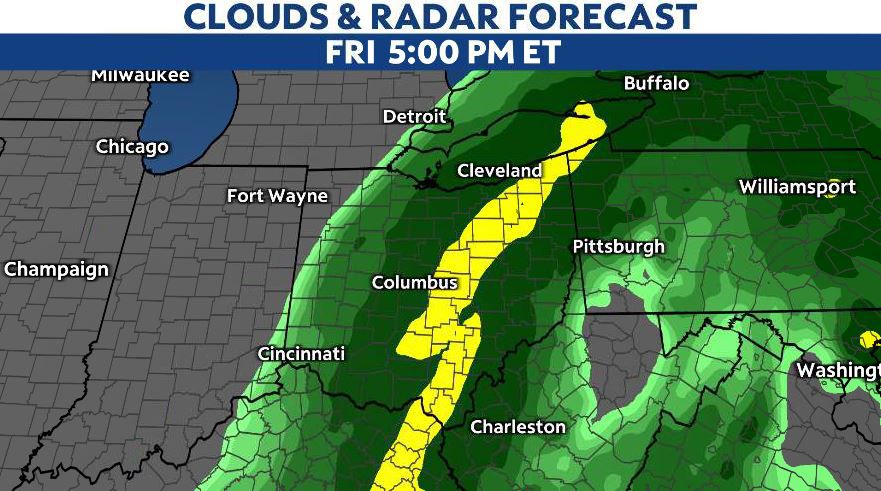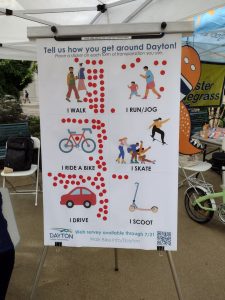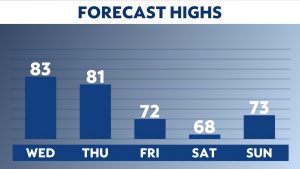CINCINNATI — Newly elected officials, unseated incumbents and political parties spent Tuesday night celebrating or mourning the end of a multi-month effort to win election into office.
But while local boards of election have counted most votes and political pundits have called the majority of races, the 2022 midterm elections aren’t over — at least not officially.
What You Need To Know
- Even after Election Day, boards of election have thousands of absentee and provisional ballots to count
- Provisional ballots are given to people who can’t verify their voting eligibility at a polling place
- Hamilton County BOE accepts roughly 90-95% of those votes
In Ohio, every election gets certified 21 days after Election Day. This year, that’s Nov. 29. The reason for that delay is the boards of elections in Ohio’s 88 counties must process thousands of absentee and provisional ballots that aren’t yet counted.
“There are still quite a few votes left to be counted before the results are official and final,” said Alex Linser, deputy director of the Hamilton County Board of Elections (BOE).
On election night, a person identifying themselves as a Hamilton County poll worker posted on social media that there were many people who tried to vote in-person on Tuesday because they didn’t submit or receive an absentee ballot on time.
“We almost ran out of provisional envelopes,” wrote the poster, who goes by the moniker “berlin-blue” on Reddit.
Linser didn’t have the exact number, but he estimated the county has roughly 8,000 provisional ballots in need of review. That will take place after the deadline for receiving absentee ballots.
As of Wednesday, Hamilton County had roughly 9,000 absentee ballots that weren’t yet accounted for, according to the BOE.
“At least anecdotally, there were a lot of voters who said that they had requested an absentee ballot by mail, and either didn’t receive it or didn’t have time to turn it in on time, and so they showed up to vote,” Linser said.
Why do some people receive a provisional ballot?
A board of elections gives someone a provisional ballot when there is uncertainty about their eligibility. That could stem from their name not being on the voter rolls, the lack of a required identification or several other reasons, such as failing to submit an absentee ballot on time.
When an issue comes up, election officials offer the voter a provisional ballot instead of a regular ballot.
State law governs the standards for handling provisional ballots. But they’re counted only after the election to ensure the vote is legal and the voter didn’t submit multiple ballots.
Mail-in absentee ballots this year required a postmark of Nov. 7 or earlier and have to be received no later than 10 days after the election.
Bryan Marshall, chair of the Political Science Department at Miami University in Oxford, Ohio, thinks some of those who didn’t receive absentee ballots likely showed up at their polling place while others may not have out of confusion. For some, voting by mail is a new thing.
“When the absentee ballots got lost or weren’t delivered, that likely led to uncertainty if they could still vote on Election Day,” he said. “Even a few instances like this can cause chaos and potentially impact election outcomes, especially in highly competitive races.”
The number of provisional ballots handed out in Hamilton County on Tuesday was “fairly typical,” Linser said. In 2018, the last midterm election, the county had about 10,000 absentee ballots. Linser qualified that there was a higher voter turnout during that election.
Just over 50% of the county’s 596,786 eligible voters took part in Tuesday’s election. By comparison, 57.52% voted in 2018.
The BOE adds a provisional ballot to the official count only after staff verifies the voter didn’t also submit an absentee ballot, Linser said. In such a case, the absentee ballot would become the official vote.
Brian Sleeth, director of elections for the Warren County Board of Elections, said it’s too early for any county to know the impact of the absentee and provisional ballots.
Warren County had 1,802 provisional ballots cast on Election Day, said Sleeth. As of Wednesday, the county still had 1,796 outstanding absentee ballots as well.
In Hamilton County, the BOE counts about 90% of all provisional ballots each election, Linser said. The BOE also accepts between 90% to 95% of absentee ballots.
“We’ll have to get all the provisional ballots entered into our system before we can know why they voted provisional,” Sleeth said.
Regular ballots, absentee ballots, provisional ballots — they all count
While unlikely, the number of votes accepted could change the outcome of many races in this year’s election — even though already called by pundits or conceded by a candidate.
One such race could, in theory, be a judicial race for the Court of Common Pleas—Juvenile Division, between Stacey DeGraffenreid and Rickell Howard Smith. As of Wednesday morning, the race was within a little over 1,000 votes.
David Gerberry, director of the Data Science Honors program at Xavier University, feels there may be some confusion surrounding the validity of provisional and absentee ballots in part because organizations often call races before the BOE counts those ballots.
“Those are real votes, and they count just the same as any other vote,” he said. “But if they’re already calling elections while there are still outstanding absentee ballots and provisional ballots that haven’t been counted, that could give somebody the wrong impression that their vote doesn’t count or will not count.”
Instances of fraud are “infinitesimally small,” Marshall said. And he believes voting absentee has the potential power to increase voter turnout by decreasing the burden and lowering the cost to participate for potential voters.
Marshall feels the process is “safe and almost certainly foolproof.”
The potential issues arise over the rules and restrictions related to absentee ballots. Political groups have displayed a willingness to use them as tools to contest election results and suppress voting in competitive counties and states such as Michigan, Pennsylvania and Wisconsin, Marshall said.
Republicans sued to disqualify thousands of mail-in ballots in swing states, according to the Washington Post.
“How tight those rules are and the restrictions imposed can either increase turnout or decrease it,” Marshall added. “If you’re trying to suppress the vote, it’s an area of potential vulnerability in our voting procedures, where parties can seek to shape electoral outcomes to the benefit of candidates. And so it’s always conflictual.”
To help counteract any doubt about the legitimacy of the election, boards of election check every vote and ballot for inconsistencies. That includes investigating any instance where someone may have attempted to cast more than one ballot, Linser said.
In most cases, it’s a situation where the voter wasn’t sure whether their absentee ballot made it back to the board of elections, Linser said. He mentioned other cases involving people who simply forgotten they’d voted early.
If the BOE determines someone attempted to vote twice on purpose, the organization turns the case over to the county prosecutor. That has happened once so far in Linser’s year-and-a-half in office. It resulted from someone not returning several calls, so the BOE couldn’t complete its investigation.
“It’s not as though these provisional ballots are going to allow people to vote twice or let people who can’t legally vote take part in the election — that’s not even a question,” Marshall said. “These are all people who have a right to exercise their vote, and providing these options to help make that process easier.”




